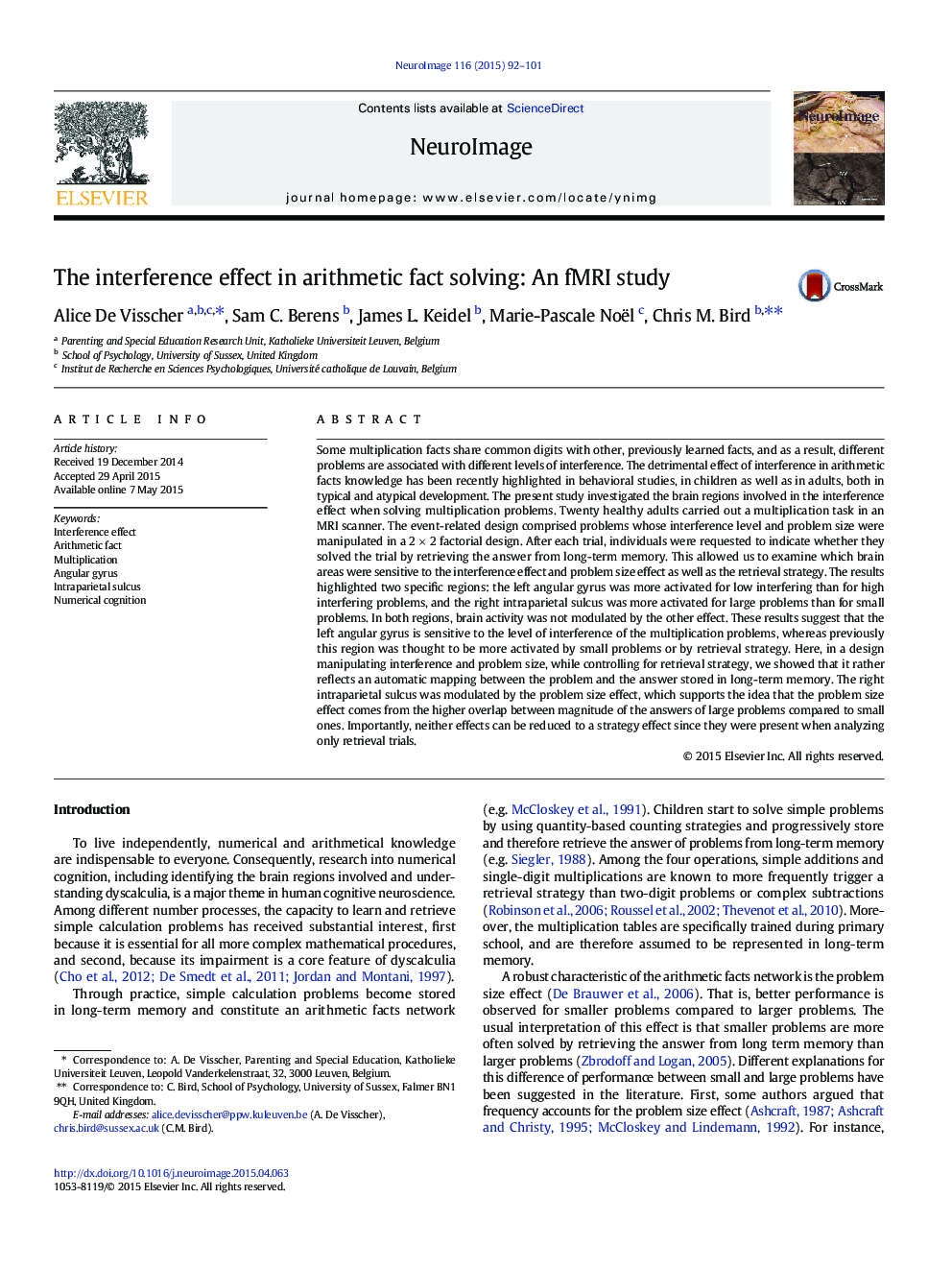| کد مقاله | کد نشریه | سال انتشار | مقاله انگلیسی | نسخه تمام متن |
|---|---|---|---|---|
| 6024885 | 1580891 | 2015 | 10 صفحه PDF | دانلود رایگان |
عنوان انگلیسی مقاله ISI
The interference effect in arithmetic fact solving: An fMRI study
دانلود مقاله + سفارش ترجمه
دانلود مقاله ISI انگلیسی
رایگان برای ایرانیان
کلمات کلیدی
موضوعات مرتبط
علوم زیستی و بیوفناوری
علم عصب شناسی
علوم اعصاب شناختی
پیش نمایش صفحه اول مقاله

چکیده انگلیسی
Some multiplication facts share common digits with other, previously learned facts, and as a result, different problems are associated with different levels of interference. The detrimental effect of interference in arithmetic facts knowledge has been recently highlighted in behavioral studies, in children as well as in adults, both in typical and atypical development. The present study investigated the brain regions involved in the interference effect when solving multiplication problems. Twenty healthy adults carried out a multiplication task in an MRI scanner. The event-related design comprised problems whose interference level and problem size were manipulated in a 2Â ÃÂ 2 factorial design. After each trial, individuals were requested to indicate whether they solved the trial by retrieving the answer from long-term memory. This allowed us to examine which brain areas were sensitive to the interference effect and problem size effect as well as the retrieval strategy. The results highlighted two specific regions: the left angular gyrus was more activated for low interfering than for high interfering problems, and the right intraparietal sulcus was more activated for large problems than for small problems. In both regions, brain activity was not modulated by the other effect. These results suggest that the left angular gyrus is sensitive to the level of interference of the multiplication problems, whereas previously this region was thought to be more activated by small problems or by retrieval strategy. Here, in a design manipulating interference and problem size, while controlling for retrieval strategy, we showed that it rather reflects an automatic mapping between the problem and the answer stored in long-term memory. The right intraparietal sulcus was modulated by the problem size effect, which supports the idea that the problem size effect comes from the higher overlap between magnitude of the answers of large problems compared to small ones. Importantly, neither effects can be reduced to a strategy effect since they were present when analyzing only retrieval trials.
ناشر
Database: Elsevier - ScienceDirect (ساینس دایرکت)
Journal: NeuroImage - Volume 116, 1 August 2015, Pages 92-101
Journal: NeuroImage - Volume 116, 1 August 2015, Pages 92-101
نویسندگان
Alice De Visscher, Sam C. Berens, James L. Keidel, Marie-Pascale Noël, Chris M. Bird,